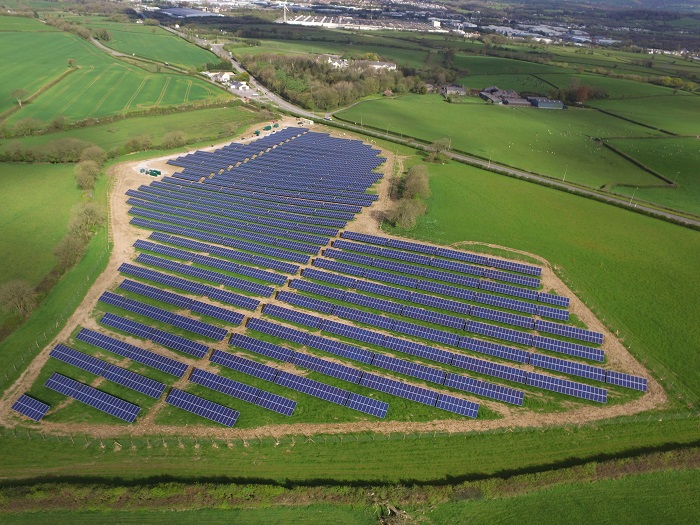A ‘stunning Sunday’ for the U.K.’s energy sector was recorded on June 11 as warm, windy sunny weather helped to push the amount of low-carbon energy on the grid to 70%, bringing the nation’s carbon intensity of power production below 100g of CO2 per kWh for the first time ever.
A healthy combination of solar PV, wind and nuclear crowded out coal and gas, enabling the British grid to reach a level of carbon intensity not expected to become the norm until 2030. This glimpse into the country’s energy future was welcomed by grid managers despite the inherent challenges that remain in bringing greater volumes of intermittent power on to the grid.
According to the National Grid’s figures, the afternoon of June 11 saw solar PV meet 8.1% of the U.K.’s power needs, with wind at more than 25%. This follows a Friday in late May when solar briefly outshone the nation’s eight nuclear power stations, and the country’s first coal-free day since the Industrial Revolution.
An upshot of more renewable power on the grid – even to those ideologically opposed to clean energy – is that as demand for power on the grid reduces, so too do prices. With high wind output in the U.K. last week, the country recorded its first negative power prices whereby conventional power plants then had to pay some utilities to take their electricity.
While such negative power prices have already been seen in Germany, this is the first time the U.K. has recorded them. “This has surprised people,” Aurora Energy Research analyst John Feddersen told the Guardian, adding that the country’s capacity market protects the U.K.’s big utilities from the type of share price tumbles seen in Germany in the wake of negative pricing.
Popular content
Also, the National Grid pays its thermal power plant providers emergency-backup subsidies that help to keep them in the black. “This is the new world for how the system’s meant to work in the U.K.,” Feddersen added. “Generators know you’re not going to get your investment back in the energy market.”
And it’s not just negative pricing that the National Grid has to deal with, but more unpredictable prices as wind and solar load the grid during the day. This volatility – which has seen day-ahead power prices fluctuate between zero and more than $90 per MWh in the past month – means that fossil fuel plants have to be ready to ramp up or down at short notice. This brings new, but welcome, challenges to the grid in the summer months.
Already in 2017 the U.K. has recorded more than 300 coal-free hours – more than the 210 hours recorded over the course of 2016, and this figure is only going to keep on rising as more wind and solar is added.
National Grid daily operations manager Duncan Burt believes that the country is prepared to handle more renewables. “It is one of these things where we’ve tipped through a threshold,” he said. “But the work we’ve done to get ready for this has paid off.”
This content is protected by copyright and may not be reused. If you want to cooperate with us and would like to reuse some of our content, please contact: editors@pv-magazine.com.


4 comments
By submitting this form you agree to pv magazine using your data for the purposes of publishing your comment.
Your personal data will only be disclosed or otherwise transmitted to third parties for the purposes of spam filtering or if this is necessary for technical maintenance of the website. Any other transfer to third parties will not take place unless this is justified on the basis of applicable data protection regulations or if pv magazine is legally obliged to do so.
You may revoke this consent at any time with effect for the future, in which case your personal data will be deleted immediately. Otherwise, your data will be deleted if pv magazine has processed your request or the purpose of data storage is fulfilled.
Further information on data privacy can be found in our Data Protection Policy.